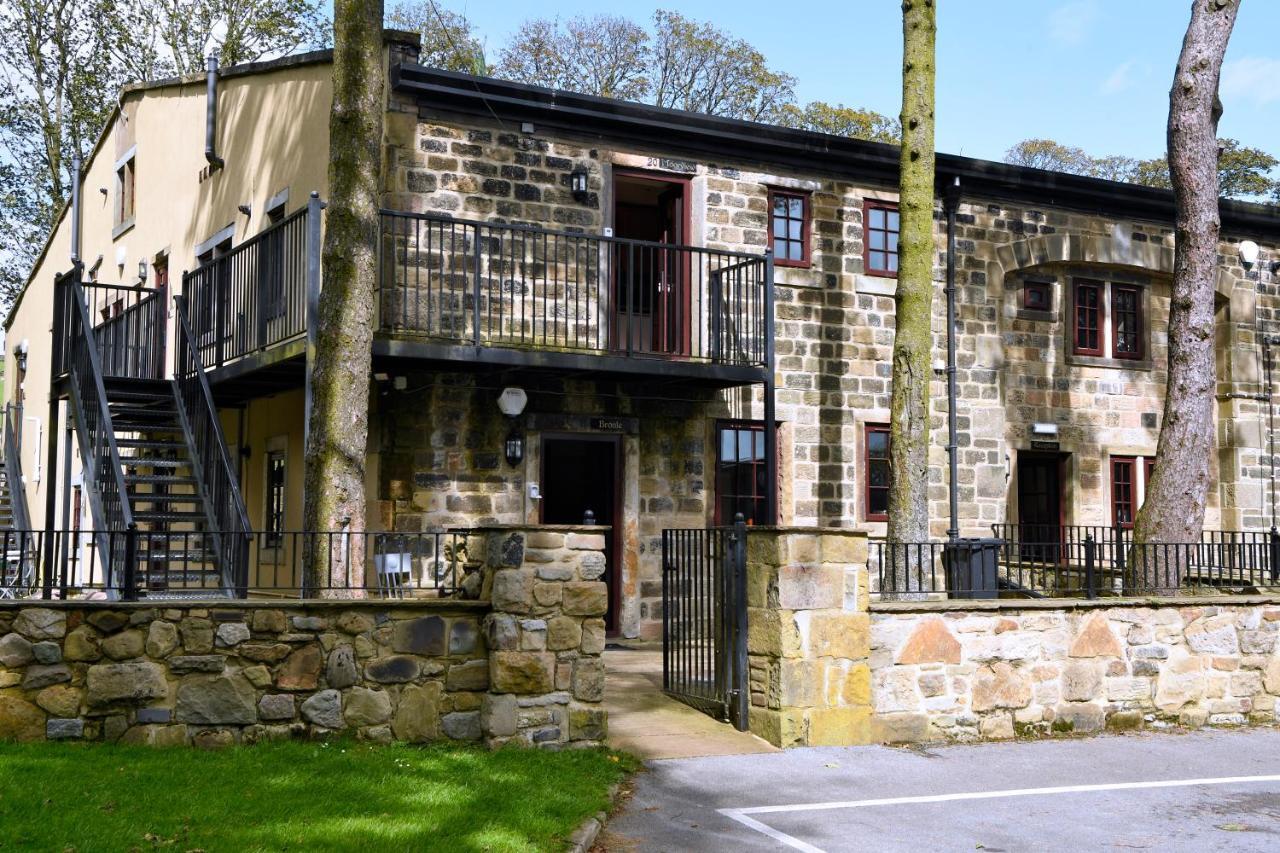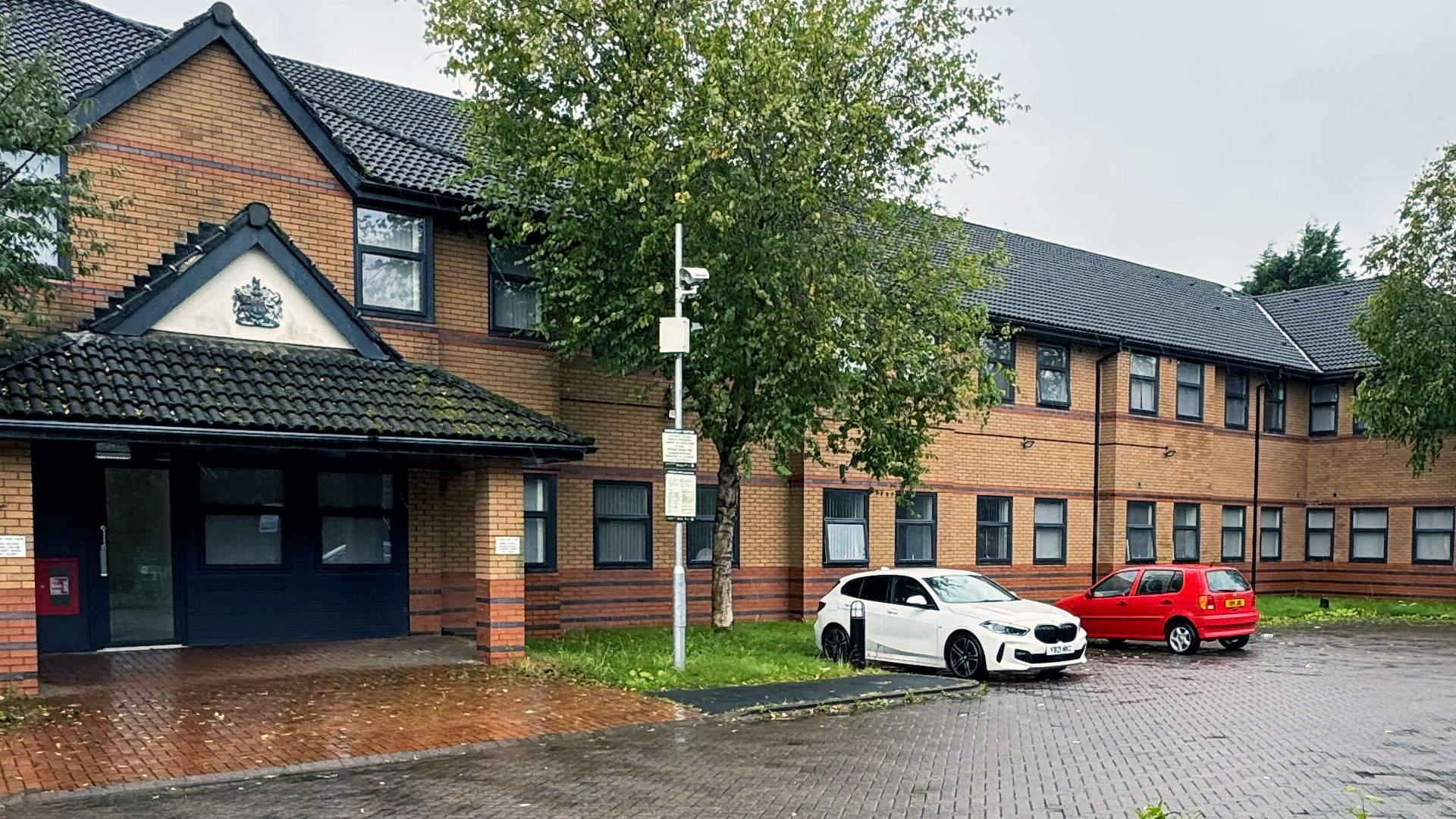Commercial property investment in the UK involves purchasing or funding non-residential real estate such as offices, retail units, warehouses, or healthcare buildings, to generate income and long-term growth.
Investors can choose between direct ownership and indirect routes like REITs and funds. With strong demand for logistics and mixed-use assets, commercial property offers portfolio diversification and potential for attractive returns, but also carries risks that require careful due diligence and market awareness.
This guide is your comprehensive resource for navigating commercial property investment in the UK. We’ve created it for a variety of investors, including those new to this asset class, experienced residential investors seeking diversification, and anyone exploring alternative investment opportunities.
Our goal is to equip you with a clear, balanced understanding of this sector and help you decide if investing in UK commercial property aligns with your financial ambitions.
Navigation
- What Is Commercial Property Investment?
- Is Commercial Property a Good Investment?
- Types of UK Commercial Property to Invest In
- How to Invest in Commercial Property UK
- Key Considerations for UK Commercial Property Investors
- UK Commercial vs. Residential Property
- The Current UK Commercial Property Market Landscape (April 2025)
- Is Commercial Property Investment Right for You?
- Conclusion
- FAQs About Commercial Property Investment in the UK
What Is Commercial Property Investment?
In simple terms, commercial property investment involves putting capital into buildings or land used for business activity. These assets are designed to generate a return for investors, typically through rental income and long-term capital growth.
This type of investment covers a wide range of real estate in the UK, including:
- Office buildings
- Retail units and shopping centres
- Industrial spaces such as warehouses and logistics hubs
- Leisure and hospitality venues
- Healthcare properties
- Mixed-use developments
Unlike residential property, which is let to individuals, commercial real estate is leased to companies. Tenants may include retailers, logistics providers, healthcare operators, or office-based businesses. The UK market spans a wide spectrum of sectors, from high-street shops and regional business parks to large-scale distribution centres and mixed-use schemes.
Returns are typically generated through:
- Rental income: Businesses pay rent under commercial lease agreements, often lasting 5 years or more. These contracts may include built-in rent reviews and terms that pass on maintenance or insurance responsibilities to the tenant.
- Capital appreciation: Over time, a well-located or upgraded asset may rise in value, creating profit when refinanced or sold.

Is Commercial Property a Good Investment? (Benefits vs. Risks)
Investing in UK commercial property can offer compelling advantages, but it’s essential to weigh these against the inherent risks before committing capital. This section explores the fundamental characteristics of commercial property as an investment class, distinct from short-term market fluctuations.
Potential Benefits of Commercial Property Investment
- Strong Income Potential: Commercial properties often generate higher rental yields compared to typical residential buy-to-lets. This is frequently due to longer lease terms and the nature of business tenancies.
- Long-Term Capital Appreciation Potential: While not guaranteed, well-located and properly managed commercial properties have the potential to increase in value over the medium to long term, providing capital growth upon sale or refinancing.
- Tax-Efficient Investment Options: Commercial property can be held within certain pension wrappers, notably a Self-Invested Personal Pension (SIPP). This structure offers tax advantages on rental income and capital gains, potentially allowing for group purchases and borrowing (learn more about holding commercial property in SIPPs).
- Lease Security and Predictability: Commercial leases are often signed for terms of five years or more. Many are Full Repairing and Insuring (FRI) leases, where the tenant bears responsibility for maintenance and insurance costs. These factors can lead to more predictable income streams and lower landlord operational burdens compared to short-term residential lets.
Key Risks and Considerations
- Sensitivity to Economic Conditions: The performance of commercial property is closely tied to the health of the broader economy. Economic downturns can reduce business profitability, potentially impacting tenant demand, rental negotiations, and property values.
- Voids and Vacancy Risk: While long leases offer security, finding a new tenant for a commercial property can take significantly longer than for a residential unit if the existing tenant leaves. These extended void periods result in lost income and ongoing holding costs for the investor.
- Significant Upfront and Ongoing Costs: Acquiring commercial property involves substantial initial expenditure. This includes Stamp Duty Land Tax (SDLT), which follows a tiered structure for non-residential properties (see current SDLT rates), plus legal fees, valuation reports, and potentially commercial agent fees. Ongoing costs include maintenance (especially if not on an FRI lease), insurance, and property management.
- Market Volatility and Sector Performance Differences: The commercial market is not uniform; different sectors (like retail, offices, or industrial logistics) respond differently to economic trends and structural shifts (such as changes in shopping habits or remote working). The value and demand for specific property types can fluctuate.
Types of UK Commercial Property to Invest In
The UK commercial property market spans a wide range of sectors, each with distinct drivers, risk profiles, and investment characteristics. Understanding these differences is essential for building a diversified portfolio and matching asset types to your investment goals.
Below are the main categories UK investors typically consider:
Office Property
- What it is: Includes city-centre office towers, business parks on the outskirts of towns, and smaller office buildings. Major UK office markets include London, Manchester, and Birmingham.
- Typical Tenants: Businesses ranging from large corporations (finance, legal, tech) to smaller firms, professional services, and public sector organisations.
- Demand Drivers: Demand is generally strongest for high-quality (Grade A), modern, energy-efficient buildings in prime locations with good transport links. Features supporting flexible working patterns and strong Environmental, Social, and Governance (ESG) credentials are increasingly important for occupiers.
- Investment Profile/Risks: Prime, well-located offices tend to attract strong investor interest and command higher rents. However, older, secondary stock may face challenges, requiring significant investment to meet modern occupier needs and energy efficiency standards (like MEES). The long-term impact of remote and hybrid working patterns on overall office demand remains a key consideration.
Retail Property
- What it is: A diverse sector including high street shops, shopping centres, supermarkets, and out-of-town retail parks (often focused on bulky goods or groceries).
- Typical Tenants: National retail chains, independent shops, supermarkets, food and beverage operators, service providers (like banks or hairdressers).
- Demand Drivers: Location (footfall, accessibility, catchment area demographics) is critical. The strength of anchor tenants (like major supermarkets in a retail park) can drive footfall for smaller units. Consumer confidence and spending patterns heavily influence performance. The rise of omnichannel retail means physical stores supporting online sales (e.g., click-and-collect) remain relevant.
- Investment Profile/Risks: This sector has shown resilience, but performance varies significantly. Retail parks, especially those anchored by supermarkets, are often considered more defensive than high streets or some shopping centres, which face greater pressure from online competition and changing consumer habits. Tenant quality and lease terms are crucial.
Industrial and Logistics
- What it is: Encompasses warehouses, distribution centres, logistics hubs (from large national facilities to smaller “last-mile” depots near urban centres), and light industrial units used for manufacturing or assembly. Often clustered near major transport infrastructure like motorways, ports, or airports.
- Typical Tenants: E-commerce companies, third-party logistics (3PL) providers managing supply chains for others, manufacturers, wholesalers, and delivery operators.
- Demand Drivers: This has been a standout sector in recent years, largely driven by the structural shift towards online shopping and the resulting need for storage and distribution space. Companies optimising supply chains and seeking efficient “last-mile” delivery solutions also fuel demand.
- Investment Profile/Risks: Strong demand has led to significant rental growth and high occupancy rates, attracting considerable investor interest. Prime, modern logistics facilities in key locations are highly sought after. Potential risks include the high capital values reflecting this strong performance (which may impact future yield potential) and the possibility of oversupply emerging in specific locations or sub-sectors.
Other Asset Classes
Beyond the main three sectors, investors might consider niche or alternative property types:
- Leisure and Hospitality: Includes hotels, pubs, restaurants, gyms, and cinemas. Performance is often linked to consumer confidence, tourism trends, and can be cyclical.
- Healthcare Property: Comprises GP surgeries, private clinics, hospitals, and care homes. Often benefits from long leases, stable tenants (like NHS trusts or established operators), and demographic trends (like an ageing population).
- Mixed-Use Developments: These combine different property types, for example, retail units on the ground floor with offices or residential apartments above. Often found in urban regeneration areas, they offer income diversification but can be complex to manage.
These alternative sectors can offer diversification benefits but may require more specialist knowledge or investment via dedicated funds due to their unique operational characteristics.

How to Invest in Commercial Property UK
There are two primary routes to commercial property investment in the UK: direct ownership and indirect exposure through investment vehicles. Each method offers unique advantages and considerations depending on your available capital, experience, risk tolerance, and desired level of day-to-day involvement.
This section outlines both paths to help you choose the structure that best suits your investment goals.
Direct Investment: Buying Physical UK Property
Direct investment means purchasing a specific commercial property outright or, more commonly, using finance. As the owner, you become the landlord, directly receiving rental income from tenants and benefiting from any potential capital growth of the asset.
Benefits
- Full Control: You make all decisions regarding the asset, including tenant selection, lease negotiations, improvements, and management strategy.
- Direct Income & Tax Allowances: You receive rental income directly and can potentially claim relevant tax allowances associated with property ownership.
- Value-Add Potential: Direct ownership allows you to potentially increase the property’s value through refurbishment, obtaining planning permissions for development, or actively repositioning the asset in the market.
Considerations
- Substantial Capital Required: Commercial properties typically require larger deposits than residential buy-to-lets, often 25% to 40% of the purchase price (meaning lower Loan-to-Value ratios, commonly maxing out around 60-75%).
- Active Management Needed: You are responsible for finding tenants, managing leases, ensuring compliance, and overseeing maintenance (unless fully passed to tenants via lease terms).
- Concentration Risk: Your capital is tied up in a single asset, making you more exposed to risks associated with that specific property, location, or tenant.
- Illiquidity: Selling a commercial property can take significantly longer than selling residential property or liquid investments like shares.
Financing Options
Most direct investors utilise a commercial mortgage. These differ significantly from residential loans:
- Stricter Criteria: Lenders focus heavily on the property’s income-generating potential (tenant quality, lease length) and often require a detailed business plan. Deposit requirements are higher (lower LTVs).
- Potentially Higher Costs: Interest rates and arrangement fees for commercial mortgages are generally higher than residential equivalents.
- Rate Examples (Indicative): Rates are often bespoke. As an example only for April 2025, indicative 5-year fixed rates might range from 6.84% to 7.25% (based on lender examples like YBS), but actual rates secured will vary widely based on LTV, property type, lease strength, and borrower status.
- Variable Rates: These typically track the Bank of England base rate plus a pre-agreed margin.
- Fees: Expect arrangement fees, typically ranging from 1% to 2.5% of the loan amount, alongside valuation and legal fees.
- Market Sensitivity: Lending criteria and available terms can tighten if market conditions become more volatile.
Entry Costs
Beyond the deposit, direct investors must budget for:
- Stamp Duty Land Tax (SDLT): Charged on a tiered basis for non-residential property. You pay 0% up to £150,000, 2% on the portion from £150,001 to £250,000, and 5% on the portion above £250,000 (check current rates and calculators).
- Professional Fees: Including solicitors for legal work, surveyors for building condition reports and valuations, and potentially commercial agents for sourcing the property.
Working with experienced professionals is highly recommended during the acquisition process.
Indirect Investment: Using Funds, REITs, and Other Vehicles
For investors seeking exposure to commercial property without the responsibilities of direct ownership, indirect methods offer lower entry barriers, diversification, and passive management.

Popular Indirect Methods
- REITs (Real Estate Investment Trusts): These are companies listed on stock exchanges that own and manage portfolios of income-producing properties. They are legally required to distribute the majority (typically 90%) of their taxable profits to shareholders as dividends and benefit from certain tax exemptions. Several UK REITs focus on specific sectors like healthcare or logistics.
- Property Funds and Trusts: These are pooled investment schemes where money from many investors is used to buy and manage a diversified portfolio of commercial properties. They can be ‘open-ended’ (allowing investors to buy/sell units usually daily, though suspensions can occur) or ‘closed-ended’ (like investment trusts listed on a stock exchange with a fixed number of shares).
- Crowdfunding Platforms: Online platforms connect investors with specific property projects (developments or acquisitions). You typically invest smaller amounts for a fixed term, receiving a share of rental income or development profit. Risks and returns vary significantly by platform and project.
- Pensions (SIPPs): As mentioned earlier, a Self-Invested Personal Pension can directly hold commercial property, offering significant tax advantages for long-term investment. This allows individuals or groups to purchase property within their pension structure, potentially using borrowing.
Benefits
- Lower Capital Entry: Allows investment with smaller sums compared to buying property directly.
- Diversification: Spreads risk across multiple properties, locations, sectors, and tenants within a single investment.
- Passive Involvement: No direct responsibility for tenant management, maintenance, or property administration.
Considerations
- Lack of Control: You don’t choose the specific properties or make management decisions.
- Fees: Subject to fund management charges, platform fees, or administrative costs, which impact overall returns.
- Market Volatility (Listed Vehicles): REITs and listed property funds can see their share prices fluctuate with general stock market sentiment, sometimes diverging from underlying property values.
- Liquidity Issues (Open-Ended Funds): Open-ended funds may suspend trading during periods of market stress if they cannot sell properties quickly enough to meet redemption requests.
Key Considerations for UK Commercial Property Investors
Successful commercial property investment in the UK hinges not just on what you buy, but also on how you approach the acquisition and management process. Every decision carries financial and operational implications that need careful thought.
Below are crucial considerations UK commercial property investors should prioritise:
Location and Tenant Demand
Location remains a cornerstone of commercial property value. A well-situated asset in an area with strong, relevant tenant demand typically supports better rental income, reduces the risk of long empty periods (voids), and offers greater potential for long-term capital growth.
- Look for established commercial hubs or documented regeneration areas benefiting from infrastructure investment.
- Consider proximity to essential transport links (motorways, train stations, ports), related business clusters, or target customer catchments.
- Research local market conditions, as vacancy rates and tenant demand can vary significantly even between nearby areas, impacting potential income stability.
A local commercial agent with specific market knowledge can provide invaluable data on tenant trends, achievable rents, and demand levels.
Analysing Lease Agreements
Beyond location, the details of the lease agreement itself are critical as they directly affect the property’s income stream, risk profile, and ultimately its investment value. Commercial leases are significantly more complex than standard residential tenancies.
Key factors to evaluate include:
- Length of Lease: Longer lease terms (often 5, 10, or 15+ years) generally provide greater income security, but reduce flexibility.
- Repair Obligations: Understand who is responsible for repairs and maintenance. Many commercial leases are ‘Full Repairing and Insuring’ (FRI), meaning the tenant covers these costs, reducing landlord outgoings.
- Rent Reviews: How and when will the rent change? Reviews might be fixed, linked to inflation (e.g., RPI/CPI), or based on the open market value at specific dates. Upward-only reviews offer protection against falling market rents.
- Break Clauses: Does the lease allow the tenant (or sometimes the landlord) to terminate the agreement early? Understand the specific conditions and notice periods required.
Always ensure a solicitor specialising in commercial property thoroughly reviews the lease documentation before you commit to a purchase.
Due Diligence and Legal Process
Before finalising any acquisition, a comprehensive due diligence process is absolutely essential to uncover potential risks and verify information. Investors should work closely with a specialist solicitor and surveyor to meticulously assess:
- Title and Ownership: Confirming the seller has the legal right to sell and checking for any charges, restrictions, or covenants on the property title.
- Planning Permissions: Verifying the current authorised use class and checking for any relevant planning history or restrictions that might impact future plans.
- Environmental Risks: Investigating potential issues such as flood risk, ground contamination, or the presence of hazardous materials like asbestos.
- Building Condition and EPC: Assessing the physical state of the property via surveys and confirming its Energy Performance Certificate (EPC) rating, particularly regarding upcoming MEES compliance requirements.
- Tenant Information: Evaluating the financial strength (‘covenant strength’) of the existing tenant (if applicable) and checking their payment history (arrears).
This checklist needs tailoring to the specific asset type and your investment strategy. Ensure all legal and regulatory checks are satisfactorily completed before exchanging contracts.
Working With Professionals
Commercial property investment involves multiple moving parts — from legal checks and lease reviews to funding and valuation. For most investors, especially those new to the sector or buying outside their local area, building the right team is essential.
Key professionals include:
- Commercial Surveyor – Assesses the building’s condition, provides an independent valuation, and advises on rental potential
- Specialist Solicitor – Manages contract negotiation, title due diligence, and reviews lease agreements
- Commercial Agent – Sources suitable properties, offers local market insight, and helps negotiate terms
- Finance Broker – Secures funding options that suit the investor’s strategy, including commercial mortgages or alternative finance
- Tax Adviser – Recommends the most tax-efficient ownership structure (e.g. personal name, limited company, SIPP) and advises on long-term obligations.
While investors can engage each professional individually, many find it more efficient and lower risk to work with an experienced property investment company that coordinates these services on their behalf. This offers a joined-up approach, with vetted partners and market-tested processes that can uncover opportunities, reduce friction, and protect long-term returns.

UK Commercial vs. Residential Property: A Quick Comparison
For investors familiar with the residential buy-to-let market, entering the commercial property sector reveals a significantly different landscape. Understanding the fundamental contrasts, from leases and tenants to finance and regulation, is vital when considering investment diversification.
Lease Terms
- Commercial: Tenancies are typically longer term, often ranging from 5 to 15 years or more, potentially providing greater income security but less frequent opportunities to adjust rent to market rates.
- Residential: Short-term agreements, like 6 or 12-month Assured Shorthold Tenancies (ASTs), are standard, leading to more frequent tenant turnover but allowing for regular rent adjustments.
Tenant Type & Responsibilities
- Commercial: Leases are with businesses. Many agreements are ‘Full Repairing and Insuring’ (FRI), meaning the tenant, not the landlord, is responsible for most repair and insurance costs. Tenant financial strength (‘covenant strength’) is crucial.
- Residential: Tenants are individuals or families. Landlords typically retain responsibility for repairs, insurance, and maintenance obligations.
Management and Voids
- Commercial: While FRI leases can reduce day-to-day landlord management, vacant periods (voids) can be lengthy and costly, as finding a suitable business tenant may take time. Landlords may be liable for business rates during voids.
- Residential: Properties generally re-let more quickly, reducing long void periods, although the higher tenant turnover means more frequent letting processes and associated management.
Regulatory Environment
- Commercial: Investors need to navigate regulations such as Minimum Energy Efficiency Standards (MEES), complex commercial lease laws, planning use classes, and business rates.
- Residential: Landlords face rules concerning tenancy deposits, potential licensing for Houses in Multiple Occupation (HMOs), specific safety certificates, and possible rent controls in certain areas.
Financing and Valuation
- Commercial: Mortgages often require larger deposits (lower Loan to Value ratios) and may have higher interest rates or fees. Lenders heavily weigh the property’s income potential, lease terms, and tenant quality. Valuation is strongly linked to rental income, lease length, and market yields.
- Residential: Financing may be more accessible with potentially lower deposit requirements. Valuation typically correlates more closely with local comparable sales, area amenities, and general housing market sentiment.
Stamp Duty Land Tax (SDLT) – England & NI Rates (as of April 2025)
- Commercial: Rates are 0% up to £150,000, 2% on the portion from £150,001 to £250,000, and 5% on the portion above £250,000.
- Residential: Standard residential rates apply, often with a significant 3% surcharge for additional properties (buy-to-let or second homes).
Ownership Structures
- Commercial: Frequently held within limited companies or Self-Invested Personal Pensions (SIPPs) for potential tax efficiency, liability protection, or pooling investment funds.
- Residential: Often owned in personal names, although ownership via a limited company is also common.
Key Takeaways for Investors
- Commercial: Offers potential for long-term, stable income from business tenants (often with reduced landlord outgoings under FRI leases) and specific tax planning opportunities (like SIPPs), but usually involves higher entry costs and requires more specialised knowledge.
- Residential: Typically provides easier market entry, greater familiarity for many investors, and faster re-letting, but usually involves more hands-on management and navigating a distinct, frequently changing regulatory landscape.
- Diversification: Many experienced investors hold both commercial and residential assets to balance risk profiles, income sources, and potential capital growth strategies.
The Current UK Commercial Property Market Landscape (April 2025)
Understanding the prevailing market conditions is crucial when evaluating potential commercial property investments. As of April 2025, the UK sector shows signs of stabilisation and cautious recovery, though performance varies significantly by asset type and quality.
Here’s a snapshot of the key economic and market indicators investors should be aware of right now:
Economic and Interest Rate Backdrop
- Economic Growth: The UK economy is forecast to grow by a modest 1.0% in 2025, according to the latest projections from the Office for Budget Responsibility (OBR) following the Spring Statement (OBR forecast via Commons Library).
While indicating a return to positive growth after stagnation, this subdued outlook underscores the importance of tenant quality and secure income streams. - Inflation: Consumer Prices Index (CPI) inflation continued its downward trend, slowing to 2.6% in the 12 months to March 2025 (ONS data).
However, forecasts suggest it may rise slightly later in the year (OBR expects an average of 3.2% for 2025) before potentially returning towards the 2% target in 2026/27. Easing inflation can support property valuations, but remaining above target influences interest rate expectations. - Interest Rates: The Bank of England Base Rate was maintained at 4.5% following the Monetary Policy Committee meeting in March 2025 (Bank of England data).
While markets anticipate gradual rate cuts later in the year (forecasts suggest a potential reduction towards 4.0% or lower), borrowing costs remain elevated.
Indicative commercial mortgage rates typically range from 6.5% upwards, varying significantly based on lender, loan specifics, and perceived risk. Lender selectivity remains high.
Market Performance and Valuations
- Overall Returns: The UK commercial property market delivered a positive total return of 2.1% in the first quarter of 2025, according to CBRE data (CBRE UK Monthly Index, March 2025). This performance was driven by continued rental value growth and the beginning of a recovery in capital values.
- Capital Values: After significant declines, capital values show signs of stabilisation. Values rose 1% between June and November 2024 ([Schroders data]) and increased by 0.3% in March 2025 ([CBRE data]), contributing to the positive Q1 return.
- Yields: Average prime commercial property yields stood at 5.93% in Q1 2025 (Savills data). Yields vary substantially by sector, location, and asset quality, offering investors potential income advantages compared to some other asset classes, albeit with different risk profiles.
Sector Specific Trends (Q1 2025 Focus)
- Retail: Continued its recent recovery, posting the strongest quarterly return at 2.8% (CBRE data, March 2025). This builds on momentum from late 2024 (e.g., shopping centres returned 4.1% in Q3’24, according to Aberdeen Q3 2024 data) and reflects relative resilience, with the same Aberdeen report noting overall retail vacancy stood low at just 5.9% in Q3 2024. Strength remains focused on segments like retail parks and prime centres, while challenges persist for secondary high street locations.
- Industrial & Logistics: Maintained strong momentum with a 2.3% total return in Q1 2025 (CBRE data), consistent with strong results in 2024, which saw 1.6% capital growth in the first three quarters (Aberdeen data). The sector continues to benefit from structural tailwinds like e-commerce, with forecasts suggesting it may see the strongest capital growth again in 2025 (Knight Frank data). While rental growth may moderate from recent peaks, underlying demand remains robust.
- Office: Delivered a modest 1.7% total return in Q1 2025 (CBRE data), masking significant polarisation. Prime, energy-efficient offices in core locations are seeing rental growth and value recovery (e.g., Aberdeen data showed Central London office rents saw strong annualised growth in Q3 2024, rising 9.7% in the West End and 8.9% in the City). Conversely, older, secondary stock faces headwinds from hybrid working trends and ESG upgrade costs, highlighting a pronounced ‘flight to quality’.
- Vacancy Context: National trends hide crucial local differences. For example, vacancy rates cited in 2024 varied widely across major cities, from 5.7% in Birmingham to 13.6% in Manchester and 14.8% in East London (Alan Boswell data), emphasising the need for thorough local market due diligence.
ESG, Investment Activity, and Outlook
- ESG Impact: Environmental performance is increasingly critical. With the deadline for commercial properties to reach an EPC rating of ‘C’ by April 2028 looming (MEES regulations via Energy Advice Hub), a clear value gap is emerging between energy-efficient and non-compliant buildings, particularly noticeable in the office and retail sectors (CBRE analysis).
- Investment Activity: Market sentiment is improving. Investment volumes are forecast to increase by 15% in 2025, potentially reaching £53 billion as pricing adjusts and confidence returns (CBRE UK Market Outlook 2025). Investor appetite for income-producing assets has renewed (Shepcom data).
- Overall Outlook: While macroeconomic uncertainties remain, 2025 is shaping up as a year of strategic recovery for UK commercial property.
Opportunities exist, particularly for investors targeting high-quality, well-located assets that meet modern occupier demands (including ESG credentials) and are underpinned by strong long-term fundamentals.

Is Commercial Property Investment Right for You?
UK commercial property presents a distinct investment pathway, offering potential for diversification, long-term capital growth, and generating income streams often secured by lengthy leases with business tenants.
As we’ve explored, opportunities span diverse sectors, from bustling logistics hubs and essential healthcare facilities to city-centre offices and resilient retail parks.
However, achieving success in this market demands careful consideration of the inherent trade-offs. Direct investment grants full control but requires substantial capital, active management, and tolerance for potential illiquidity and longer void periods compared to residential property.
Indirect routes like REITs or funds offer easier access and diversification but involve management fees and less control over specific assets.
Regardless of the path chosen, thorough due diligence, understanding complex lease terms, navigating regulations like MEES, and focusing on quality, location, and tenant strength are paramount, particularly in the current market, which favours assets with strong ESG credentials.
Before committing capital, reflect honestly on these key questions:
- Do you have the necessary liquidity and risk appetite for an investment that is typically less liquid and requires a longer-term outlook than some alternatives?
- Does direct ownership with its hands-on control and responsibilities, or an indirect approach offering simplicity and diversification through vehicles like REITs, funds, or SIPPs, better suit your financial situation and desired involvement level?
- Can you access the right specialist advisers – experienced commercial property solicitors, surveyors, agents, finance brokers, and tax consultants – to guide your decisions and mitigate risks?
For many investors, commercial real estate can serve as a valuable component within a diversified portfolio, complementing holdings in residential property, equities, or bonds. Yet, it’s not a guaranteed path to profit. Diligent research, aligning the investment with your personal financial goals, and understanding the specific risks of any opportunity are essential.
This guide offers a strong starting point, but personalised advice is essential for navigating the commercial property market with confidence.
Conclusion
With over 20 years of experience sourcing and delivering high-performing UK property investments, Knight Knox provides the insight, trusted network, and end-to-end support investors need to make informed, strategic decisions.
Our consultants can help you access opportunities that align with your financial goals and risk profile.
Ready to take the next step?
Contact us today to speak with an expert investment consultant or explore our current portfolio of high-yield UK property investment opportunities.
FAQs About Commercial Property Investment in the UK
What is the minimum investment for commercial property in the UK?
The minimum investment depends on the route you choose. Direct purchase typically requires a deposit of 25–40% on a property priced from around £150,000 upwards. Indirect options like commercial property funds or REITs can offer entry points from as little as £1,000, depending on the platform. SIPPs also allow pooled purchases with other investors.
Can I invest in commercial property through my pension?
Yes, commercial property can be held within a Self-Invested Personal Pension (SIPP) or a Small Self-Administered Scheme (SSAS). These allow for tax-efficient income and capital growth. The property must be used for business purposes and meet HMRC rules. Group purchases and borrowing are permitted under certain conditions.
What types of commercial property offer the highest yields?
Industrial and logistics properties, particularly those near transport corridors or urban centres, often deliver the highest rental yields. Retail warehousing and healthcare properties can also perform strongly. However, yields vary by location, tenant profile, and lease structure, so detailed due diligence is essential.
What are the tax implications of commercial property investment in the UK?
Investors may be liable for Stamp Duty Land Tax (SDLT), income tax on rental profits, and capital gains tax on disposal. However, using structures such as limited companies or pensions (e.g. SIPPs) can help manage tax exposure. VAT may also apply to some transactions, particularly for new or opt-to-tax properties.
How is commercial property different from residential investment?
Key differences include lease length (typically longer in commercial), tenant type (businesses vs individuals), regulation (e.g. MEES, business rates), and financing. Commercial property often requires more upfront capital but offers greater income stability and fewer tenant changes.
Browse expert-led investment advice
Emma Greensill is the Social Media Executive at Knight Knox, where she has been part of the team for eight months. With a degree in Multimedia Journalism and nearly five years of experience in marketing and social media, Emma brings a strong editorial mindset and a creative approach to digital content.
She particularly enjoys getting out to capture on-the-ground content that brings the brand to life, and she’s not afraid to step in front of the camera when needed—a challenge she finds both exciting and rewarding.













